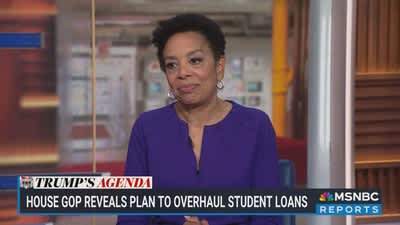
The Trump administration’sresumption of collection effortson defaulted federal student loans has far-reaching consequences for delinquent borrowers.
For starters, borrowers who are in default may have wages, tax returns and Social Security payments garnished.
But involuntary collections could also have a “spillover effect,” which puts consumers at risk of falling behind on other debt repayments, according to arecent report from the Federal Reserve Bank of New York,
As collection activityrestarts, disposable income falls
“We were obviously somewhat concerned about potential spillovers to delinquencies on other types of debt,” the New York Fed researchers said on a press call earlier this month.
“During the period where people were not required to make payments on their student loans, they could have used that money to pay their credit card bills and auto loans,” the researchers said. “Now they have to make these payments again on their student loans, so that could put pressure on their ability to pay these other loans.”
More from Personal Finance:
Wage garnishment for defaulted student loans to begin
What loan forgiveness opportunities remain under Trump
Is college still worth it? It is for most, but not all
The U.S. Department of Education’s crackdown on student loan repayments could take billions of dollars out of consumers’ pockets, reports show. Monthly collections on defaulted loans may reduce disposable personal income between $3.1 billion and $8.5 billion a month, according to research by JPMorgan.
“Part of the reason that some people are adding to credit card debt is because they have student loan payments — that’s the spillover effect,” saidTed Rossman, senior industry analyst at Bankrate. “Something’s got to give.”
‘It’s just money that can’t go to other financial things’
Until earlier this month, the Department of Education had not collected on defaulted student loans since March 2020. After theCovid pandemic-era pauseon federal student loan paymentsexpired in September 2023, the Biden administration offered borrowersanother yearin which they would beshielded from the impacts of missed payments. That on-ramp officially ended onSept. 30, 2024, and the Education Department restarted collection effortson defaulted student loans on May 5.
Whether borrowers face garnishment, or opt to resume payments to get current on their loan, that’s likely to have a significant impact on their wallet.
“It’s just money that can’t go to other financial things,” said Matt Schulz, chief credit analyst at LendingTree.
After the five-year pause ended and collections resumed, the delinquency rate for student loan balances spiked, the New York Fed found. Nearly 8% of total student debt was reported as 90 days past due in the first quarter of 2025, compared with less than 1% in the previous quarter.
Currently,around 42 million Americanshold federal student loans and roughly 5.3 million borrowers are in default, according to the Education Department. Another 4 million borrowers are in “late-stage delinquency,” or more than 90 days past due on payments.
Among borrowers who are now required to make payments — not including those who are in deferment or forbearance or are currently enrolled in school — nearly 1 in 4 student loan borrowers are behind in their payments, the New York Fed found.
As borrowers transition out of forbearance and into repayment, those borrowers may also face challenges making payments, according to a separate research note by Bank of America. “This transition will likely drive delinquencies and defaults on student loans higher and could have further knock-on effects for consumer finance companies,” Bank of America analyst Mihir Bhatia wrote to clients on May 15.
In ablog post, the New York Fed researchers noted that “it is unclear whether these penalties will spill over into payment difficulties in other credit products, but we will continue to monitor this space in the coming months.”

